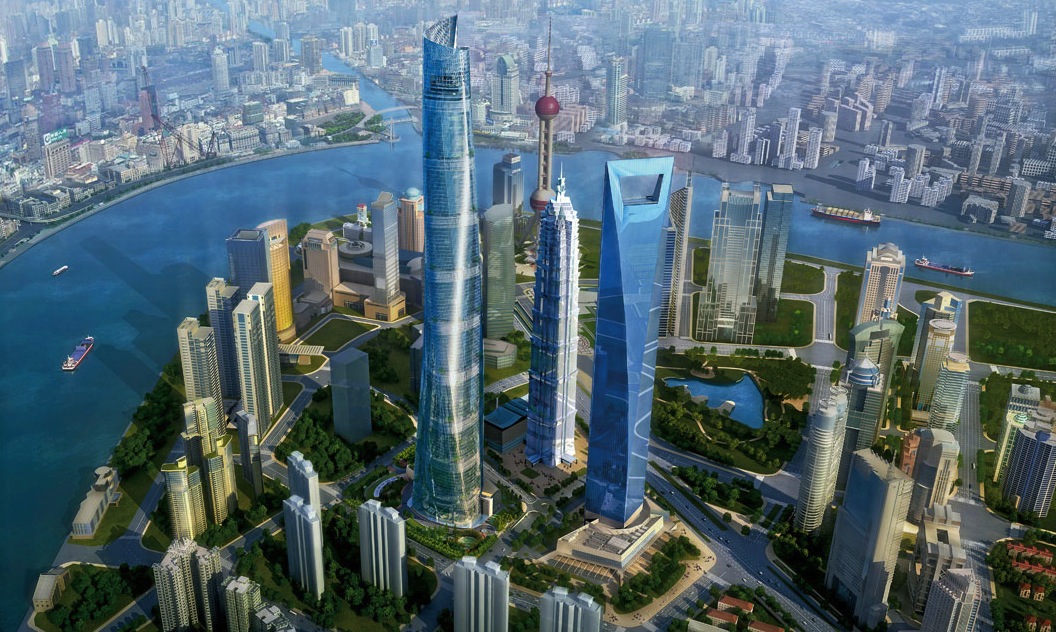Tall buildings always draw attention, and in 2015 they're only getting bigger and better. The Council on Tall Buildings and Urban Habitat has published a list of its top predictions for skyscrapers in the coming year, noting milestones on individual projects, like the highly anticipated Kingdom Tower, and larger industry trends, such as the use of wood in high-rise construction.
From Moscow to Kuala Lumpur, it looks as if 2015 will hold some major highlights for the tall buildings industry. Here are CTBUH's predictions:
1. New York’s B2 Will Be Back
A legal scuffle between contractor Skanska and developer Forest City Ratner stalled this project in 2014, but it will likely be back on track early in 2015.
2. 2015: Year of the “Woodscraper”?
More than one wood-heavy skyscraper is under construction as we move into the new year, and the U.S. Department of Agriculture will reveal the winner of the $2 million Tall Wood Building Competition.
3. Dubai’s Burj 2020 to Get Under Way
The long-awaited Burj 2020 looks to begin construction in 2015, with shortlisted engineering teams being interviewed in late 2014.
4. Re-imagined Pinnacle Will Be Revealed
The London Pinnacle, only partway finished due to the recession, has been taken on by PLP Architects. Their plans for the project should be unveiled by spring of 2015.
5. Jeddah’s Kingdom Tower Completes 22nd Floor
CTBUH predicts that the tower will complete its 22nd floor by May, with construction currently running at 2.5 floors per month.
6. Las Vegas’ Harmon Hotel Will Finally Come Down
After years of frustration and speculation, the deconstruction of this ill-fated hotel began in 2014, and is on track for completion in 2015.
7. Ping An Finance Center Will Top Out
Shenzhen's Ping An Finance Center should reach its ultimate height by mid-2015.
8. Moscow’s Federation Towers Will Be Completed
If this complex is finished in 2015, its Vostok Tower will be the tallest tower in Europe.
9. Foundation Work for Kuala Lumpur’s KL118 Completed by Q3 2015
Developer KL118 has reported that the foundation for the tower will be laid by the end of 2015's third quarter.
10. Shanghai Tower Will Be Completed
The tower and its glassed-in skygardens are set to open their doors by the end of 2015.
11. China Will Complete 13 Supertalls
Squarely ahead of any other country in this category, if China completes its scheduled 13 supertalls, it will be responsible for 57% of the world's supertall buildings in 2015.
Read CTBUH's "Watch Out for These Tall Happenings in 2015" report.
Related Stories
| Apr 12, 2011
American Institute of Architects announces Guide for Sustainable Projects
AIA Guide for Sustainable Projects to provide design and construction industries with roadmap for working on sustainable projects.
| Apr 11, 2011
Wind turbines to generate power for new UNT football stadium
The University of North Texas has received a $2 million grant from the State Energy Conservation Office to install three wind turbines that will feed the electrical grid and provide power to UNT’s new football stadium.
| Apr 8, 2011
SHW Group appoints Marjorie K. Simmons as CEO
Chairman of the Board Marjorie K. Simmons assumes CEO position, making SHW Group the only firm in the AIA Large Firm Roundtable to appoint a woman to this leadership position
| Apr 5, 2011
Zaha Hadid’s civic center design divides California city
Architect Zaha Hadid is in high demand these days, designing projects in Hong Kong, Milan, and Seoul, not to mention the London Aquatics Center, the swimming arena for the 2012 Olympics. But one of the firm’s smaller clients, the city of Elk Grove, Calif., recently conjured far different kinds of aquatic life when members of the City Council and the public chose words like “squid,” “octopus,” and “starfish” to describe the latest renderings for a proposed civic center.
| Apr 5, 2011
Are architects falling behind on BIM?
A study by the National Building Specification arm of RIBA Enterprises showed that 43% of architects and others in the industry had still not heard of BIM, let alone started using it. It also found that of the 13% of respondents who were using BIM only a third thought they would be using it for most of their projects in a year’s time.










